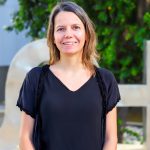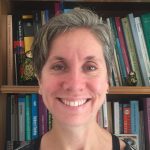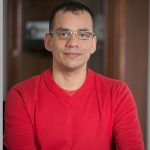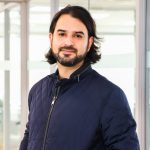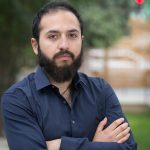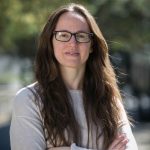Proyectos
- 23CVC-245806
- Abril 2021 - Marzo 2023
En EjecuciónUniversidad de O'Higgins
Transferencia Drosophila suzukii: Plaga presente – Futura convivencia
[vc_section el_class="container mx-auto align-items-center circle--pattern" css=".vc_custom_1648956589196{padding-top: 3rem !important;}"][vc_row el_class="pb-5"][vc_column][vc_wp_custommenu nav_menu="6"][uoh_breadcrumb_component automatic_breadcrumb="true"][uoh_title_component title_dropdown="big" title_decorator="true"]{{title}}[/uoh_title_component][vc_column_text css=""][/vc_column_text][/vc_column][/vc_row][/vc_section][vc_section css=".vc_custom_1649209804184{background-color: #f6faff !important;}" el_class="p-md-0 pt-md-5"][vc_row el_class="container mx-auto align-items-center p-md-0 pt-5"][vc_column el_class="p-0"][/vc_column][/vc_row][/vc_section][vc_section css=".vc_custom_1649210787516{background-color: #f6faff !important;}" el_class="p-md-0 pt-md-5 pb-md-5"][vc_row el_class="container mx-auto align-items-center"][vc_column][/vc_column][/vc_row][/vc_section]
Investigador/a Responsable
- FOVI230206
- Abril 2021 - Marzo 2024
FinalizadoAgencia Nacional de Investigación y Desarrollo - ANID
Facilitadores y barreras en la experiencia escolar diaria de niños y niñas con diagnóstico de discapacidad que participan en Programas de Integración Escolar
[vc_section el_class="container mx-auto align-items-center circle--pattern" css=".vc_custom_1648956589196{padding-top: 3rem !important;}"][vc_row el_class="pb-5"][vc_column][vc_wp_custommenu nav_menu="6"][uoh_breadcrumb_component automatic_breadcrumb="true"][uoh_title_component title_dropdown="big" title_decorator="true"]{{title}}[/uoh_title_component][vc_column_text css=""]The School Integration Program (PIE) is one of the most critical educational inclusion policies in
Chile. PIE is a form of special subsidy to schools, using as criteria temporary and permanent
special educational needs. It is found throughout the national territory, considered successful at
the implementation level and in the integration of new support professionals. However, it has
received criticism such as the low relationship with concepts such as school effectiveness, the
individualization, and stigmatization of program users by focusing on deficits and not so much
on barriers and facilitators of inclusion, as well as the low access and participation of students
with disabilities. Furthermore, few studies list children participating in PIE as primary informants.
The present study seeks to know and analyze boys' and girls' daily experiences with disabilities
in various areas of the national territory. The conceptual framework is the social studies on
disability to understand the experience of children with disabilities in a social context that can
be both beneficial and detrimental to their school inclusion. The other reference for the project
is the new social studies of childhood while promoting that children are valid informants of their
realities. Objectives: This study aims to analyze the perspectives of children in situations of
motor and sensory disability participating in the PIE about the barriers and facilitators for
inclusion in their daily school experiences, as well as the influence that PIE has had on their
school lives. Methodology: it is a qualitative study of an analytical nature to be carried out in 5
macro zones of the national territory for three years, through specially designed narrative
interviews with 31 children with motor and sensory disabilities, including interviews with the PIE
coordinators of their schools. Expected results: The project hopes to generate knowledge about
PIE and disability as a special educational need, based on the experience of children with
disabilities, to account for their specific experiences and needs, and possible solutions to the
barriers presented. It also seeks to generate specific methodological knowledge to collect data
with children with disabilities. It is a transdisciplinary project in that disability is a phenomenon
that must be studied from different fields; therefore, an educational psychologist, a social
psychologist, an educator, and a kinesiologist are included in the researchers' team.[/vc_column_text][/vc_column][/vc_row][/vc_section][vc_section css=".vc_custom_1649209804184{background-color: #f6faff !important;}" el_class="p-md-0 pt-md-5"][vc_row el_class="container mx-auto align-items-center p-md-0 pt-5"][vc_column el_class="p-0"][/vc_column][/vc_row][/vc_section][vc_section css=".vc_custom_1649210787516{background-color: #f6faff !important;}" el_class="p-md-0 pt-md-5 pb-md-5"][vc_row el_class="container mx-auto align-items-center"][vc_column][/vc_column][/vc_row][/vc_section]
Co-Investigador/a
- NCS2021_14
- Abril 2021 - Marzo 2025
En EjecuciónAgencia Nacional de Investigación y Desarrollo - ANID
Understanding and modeling visual numerosity perception
[vc_section el_class="container mx-auto align-items-center circle--pattern" css=".vc_custom_1648956589196{padding-top: 3rem !important;}"][vc_row el_class="pb-5"][vc_column][vc_wp_custommenu nav_menu="6"][uoh_breadcrumb_component automatic_breadcrumb="true"][uoh_title_component title_dropdown="big" title_decorator="true"]{{title}}[/uoh_title_component][vc_column_text css=""][/vc_column_text][/vc_column][/vc_row][/vc_section][vc_section css=".vc_custom_1649209804184{background-color: #f6faff !important;}" el_class="p-md-0 pt-md-5"][vc_row el_class="container mx-auto align-items-center p-md-0 pt-5"][vc_column el_class="p-0"][/vc_column][/vc_row][/vc_section][vc_section css=".vc_custom_1649210787516{background-color: #f6faff !important;}" el_class="p-md-0 pt-md-5 pb-md-5"][vc_row el_class="container mx-auto align-items-center"][vc_column][/vc_column][/vc_row][/vc_section]
Investigador/a Responsable
- FONDECYT REGULAR 1241502
- Abril 2021 - Marzo 2023
En EjecuciónCorporación de Fomento de la Producción - CORFO
Transferencia Drosophila suzukii: Plaga presente – Futura convivencia
[vc_section el_class="container mx-auto align-items-center circle--pattern" css=".vc_custom_1648956589196{padding-top: 3rem !important;}"][vc_row el_class="pb-5"][vc_column][vc_wp_custommenu nav_menu="6"][uoh_breadcrumb_component automatic_breadcrumb="true"][uoh_title_component title_dropdown="big" title_decorator="true"]{{title}}[/uoh_title_component][vc_column_text css=""][/vc_column_text][/vc_column][/vc_row][/vc_section][vc_section css=".vc_custom_1649209804184{background-color: #f6faff !important;}" el_class="p-md-0 pt-md-5"][vc_row el_class="container mx-auto align-items-center p-md-0 pt-5"][vc_column el_class="p-0"][/vc_column][/vc_row][/vc_section][vc_section css=".vc_custom_1649210787516{background-color: #f6faff !important;}" el_class="p-md-0 pt-md-5 pb-md-5"][vc_row el_class="container mx-auto align-items-center"][vc_column][/vc_column][/vc_row][/vc_section]
Co-Investigador/a
- FONDO DE INVESTIGACIÓN INTERDISCIPLINARIA
- Abril 2021 - Marzo 2024
FinalizadoAgencia Nacional de Investigación y Desarrollo - ANID
Facilitadores y barreras en la experiencia escolar diaria de niños y niñas con diagnóstico de discapacidad que participan en Programas de Integración Escolar
[vc_section el_class="container mx-auto align-items-center circle--pattern" css=".vc_custom_1648956589196{padding-top: 3rem !important;}"][vc_row el_class="pb-5"][vc_column][vc_wp_custommenu nav_menu="6"][uoh_breadcrumb_component automatic_breadcrumb="true"][uoh_title_component title_dropdown="big" title_decorator="true"]{{title}}[/uoh_title_component][vc_column_text css=""]The School Integration Program (PIE) is one of the most critical educational inclusion policies in
Chile. PIE is a form of special subsidy to schools, using as criteria temporary and permanent
special educational needs. It is found throughout the national territory, considered successful at
the implementation level and in the integration of new support professionals. However, it has
received criticism such as the low relationship with concepts such as school effectiveness, the
individualization, and stigmatization of program users by focusing on deficits and not so much
on barriers and facilitators of inclusion, as well as the low access and participation of students
with disabilities. Furthermore, few studies list children participating in PIE as primary informants.
The present study seeks to know and analyze boys' and girls' daily experiences with disabilities
in various areas of the national territory. The conceptual framework is the social studies on
disability to understand the experience of children with disabilities in a social context that can
be both beneficial and detrimental to their school inclusion. The other reference for the project
is the new social studies of childhood while promoting that children are valid informants of their
realities. Objectives: This study aims to analyze the perspectives of children in situations of
motor and sensory disability participating in the PIE about the barriers and facilitators for
inclusion in their daily school experiences, as well as the influence that PIE has had on their
school lives. Methodology: it is a qualitative study of an analytical nature to be carried out in 5
macro zones of the national territory for three years, through specially designed narrative
interviews with 31 children with motor and sensory disabilities, including interviews with the PIE
coordinators of their schools. Expected results: The project hopes to generate knowledge about
PIE and disability as a special educational need, based on the experience of children with
disabilities, to account for their specific experiences and needs, and possible solutions to the
barriers presented. It also seeks to generate specific methodological knowledge to collect data
with children with disabilities. It is a transdisciplinary project in that disability is a phenomenon
that must be studied from different fields; therefore, an educational psychologist, a social
psychologist, an educator, and a kinesiologist are included in the researchers' team.[/vc_column_text][/vc_column][/vc_row][/vc_section][vc_section css=".vc_custom_1649209804184{background-color: #f6faff !important;}" el_class="p-md-0 pt-md-5"][vc_row el_class="container mx-auto align-items-center p-md-0 pt-5"][vc_column el_class="p-0"][/vc_column][/vc_row][/vc_section][vc_section css=".vc_custom_1649210787516{background-color: #f6faff !important;}" el_class="p-md-0 pt-md-5 pb-md-5"][vc_row el_class="container mx-auto align-items-center"][vc_column][/vc_column][/vc_row][/vc_section]
Co-Investigador/a
- FOVI240153
- Abril 2021 - Marzo 2024
FinalizadoAgencia Nacional de Investigación y Desarrollo - ANID
Optimizing microbubbles localization in ultrasound super-resolution imaging
[vc_section el_class="container mx-auto align-items-center circle--pattern" css=".vc_custom_1648956589196{padding-top: 3rem !important;}"][vc_row el_class="pb-5"][vc_column][vc_wp_custommenu nav_menu="6"][uoh_breadcrumb_component automatic_breadcrumb="true"][uoh_title_component title_dropdown="big" title_decorator="true"]{{title}}[/uoh_title_component][vc_column_text css=""]Introduction: Ultrasound (US) exams are extensively used in Chile and around the world. This non-invasive imaging technique has many advantages when compared to magnetic resonance, computed tomography, and others because it has a low cost, it does not need ionizing radiation, and it is portable equipment. However, this technique has many challenges; the most known is the balance between resolution and penetration depth. Recently, in 2011, a new technique of US has been described: the ultrasound localization microscopy (ULM). However, it was only in 2015 that this technique gained knowledge with the publication of Errico et al. (2015) who described the ultrafast ultrasound localization microscopy applied in vivo in rats brain. ULM eliminates the challenge of the balance between resolution and penetration; but a new challenge emerges: the balance between localization precision of microbubble, microbubble concentration, and acquisition time. The microbubbles (MB) are the contrast agent for the US technique. They have 1-5 µm in diameter and act as a blinking source. These MB are injected into the bloodstream and flow into the circulatory system. ULM is also known as super-resolution imaging; it can produce vascular images with a resolution around 10 µm, 10 times better than the conventional US image. This unprecedented resolution has numerous potential applications. In particular, ULM would have a high impact in oncology because the vascular structure of early tumors, that are in the range of 5 µm to 80 µm, provides information that can help in the early diagnosis and monitor therapy responses. The huge potentiality of ULM has produced a lot of excitement and expectation worldwide, and it became a hot topic in the medical ultrasound community. Unfortunately, this technique is not yet clinically approved because it is still in development stages and presents many challenges that must be solved before translating it into clinics. The mainly limitations to overcome before translating ULM into clinics are the following: contrast-to-tissue ratio (CTR), signal-to-noise ratio (SNR), acquisition time, microbubble concentration, motion, lack of a gold standard, data overdose, exploitation of ultrafast scanner uncommon in the clinic and so on. Therefore, the aim of this study is to optimize the technique to localize microbubbles, and to explore the physics of microbubble to provide a change in the paradigm of the processes to produce ULM by combining the superresolution processing with a controlled exterior force impulse. To achieve this aim, first a numerical study will be performed to simulate microbubbles into small vessels and find a better way to localize them. The robustness of the algorithm will be increased to consider the non-linear interactions between MB and US and to consider the parabolic velocity profile of the vessel/tube. Up to date, the studies on microbubbles localization in ULM are after the image acquisition. There are no tissue/flow simulations of the behavior of microbubbles into the vessels with this technique. To perform the simulation, we will use a computer with excellent storage capacity and great velocity of processing together with the MATLAB algorithm: The Full Wave Solver. Second, an experimental study will be performed to generate super resolution images in a conventional phantom. The state of art will be applied with a phantom made by microtubes and microbubbles and then, the improvement of the aim 1 will be considered into this experiment. The complexity of the phantom will be increased from a medium with only water, then gelatine and finally, we will add some respiratory simulated movement. To the experimental setup we will use the Verasonics Vantage 128 research ultrasound scanner with different types of ultrasound transducers, microbubbles, microtubes, gelatine and the respiratory movement will be simulated with a vibration testing system (Shaker VTS-100). Finally, the physics of microbubble will be explored to provide a change in the paradigm of the processes to produce ULM and to detect the MB in a more direct way, without the need to perform a filter, like the signal value decomposition (SVD). We want to apply the an external know push pulse that will produce differences in the shear waves between the microbubbles and the tissue around and with simulations we will be able to know the response of microbubbles and it may help us to separate them from the tissue. Expected results: As result of this study, we expect to develop a numerical simulation to the ULM method, by considering interactions of the US with the tissue and fluid dynamics of the blood into the vessel and significantly optimize the techniques of MB detection. Besides that, this project will help to improve the first fully programmable ultrasound scanner system in Chile. Potentially, this would open new research areas at the country level, such as ultrasound imaging, ultrasound super-resolution imaging and soft tissue characterization.[/vc_column_text][/vc_column][/vc_row][/vc_section][vc_section css=".vc_custom_1649209804184{background-color: #f6faff !important;}" el_class="p-md-0 pt-md-5"][vc_row el_class="container mx-auto align-items-center p-md-0 pt-5"][vc_column el_class="p-0"][/vc_column][/vc_row][/vc_section][vc_section css=".vc_custom_1649210787516{background-color: #f6faff !important;}" el_class="p-md-0 pt-md-5 pb-md-5"][vc_row el_class="container mx-auto align-items-center"][vc_column][/vc_column][/vc_row][/vc_section]
Co-Investigador/a
- MSM2021003
- Abril 2021 - Marzo 2023
En EjecuciónUniversidad de O'Higgins
Transferencia Drosophila suzukii: Plaga presente – Futura convivencia
[vc_section el_class="container mx-auto align-items-center circle--pattern" css=".vc_custom_1648956589196{padding-top: 3rem !important;}"][vc_row el_class="pb-5"][vc_column][vc_wp_custommenu nav_menu="6"][uoh_breadcrumb_component automatic_breadcrumb="true"][uoh_title_component title_dropdown="big" title_decorator="true"]{{title}}[/uoh_title_component][vc_column_text css=""][/vc_column_text][/vc_column][/vc_row][/vc_section][vc_section css=".vc_custom_1649209804184{background-color: #f6faff !important;}" el_class="p-md-0 pt-md-5"][vc_row el_class="container mx-auto align-items-center p-md-0 pt-5"][vc_column el_class="p-0"][/vc_column][/vc_row][/vc_section][vc_section css=".vc_custom_1649210787516{background-color: #f6faff !important;}" el_class="p-md-0 pt-md-5 pb-md-5"][vc_row el_class="container mx-auto align-items-center"][vc_column][/vc_column][/vc_row][/vc_section]
Co-Investigador/a
- 3240062
- Abril 2021 - Marzo 2025
En EjecuciónAgencia Nacional de Investigación y Desarrollo - ANID
Understanding and modeling visual numerosity perception
[vc_section el_class="container mx-auto align-items-center circle--pattern" css=".vc_custom_1648956589196{padding-top: 3rem !important;}"][vc_row el_class="pb-5"][vc_column][vc_wp_custommenu nav_menu="6"][uoh_breadcrumb_component automatic_breadcrumb="true"][uoh_title_component title_dropdown="big" title_decorator="true"]{{title}}[/uoh_title_component][vc_column_text css=""][/vc_column_text][/vc_column][/vc_row][/vc_section][vc_section css=".vc_custom_1649209804184{background-color: #f6faff !important;}" el_class="p-md-0 pt-md-5"][vc_row el_class="container mx-auto align-items-center p-md-0 pt-5"][vc_column el_class="p-0"][/vc_column][/vc_row][/vc_section][vc_section css=".vc_custom_1649210787516{background-color: #f6faff !important;}" el_class="p-md-0 pt-md-5 pb-md-5"][vc_row el_class="container mx-auto align-items-center"][vc_column][/vc_column][/vc_row][/vc_section]
Co-Investigador/a
- 1210286
- Abril 2021 - Agosto 2022
AdjudicadoColegio Médico de Chile
Riesgo psicosocial y presentismo: un estudio de cohorte en población chilena
[vc_section el_class="container mx-auto align-items-center circle--pattern" css=".vc_custom_1648956589196{padding-top: 3rem !important;}"][vc_row el_class="pb-5"][vc_column][vc_wp_custommenu nav_menu="6"][uoh_breadcrumb_component automatic_breadcrumb="true"][uoh_title_component title_dropdown="big" title_decorator="true"]{{title}}[/uoh_title_component][vc_column_text css=""][/vc_column_text][/vc_column][/vc_row][/vc_section][vc_section css=".vc_custom_1649209804184{background-color: #f6faff !important;}" el_class="p-md-0 pt-md-5"][vc_row el_class="container mx-auto align-items-center p-md-0 pt-5"][vc_column el_class="p-0"][/vc_column][/vc_row][/vc_section][vc_section css=".vc_custom_1649210787516{background-color: #f6faff !important;}" el_class="p-md-0 pt-md-5 pb-md-5"][vc_row el_class="container mx-auto align-items-center"][vc_column][/vc_column][/vc_row][/vc_section]
Co-Investigador/a
- EQM230041
- Abril 2021 - Mayo 2026
AdjudicadoUniversidad de O'Higgins
Empaquetamiento tecnológico de producción de nematodos entomopatógenos locales en medio líquido
[vc_section el_class="container mx-auto align-items-center circle--pattern" css=".vc_custom_1648956589196{padding-top: 3rem !important;}"][vc_row el_class="pb-5"][vc_column][vc_wp_custommenu nav_menu="6"][uoh_breadcrumb_component automatic_breadcrumb="true"][uoh_title_component title_dropdown="big" title_decorator="true"]{{title}}[/uoh_title_component][vc_column_text css=""][/vc_column_text][/vc_column][/vc_row][/vc_section][vc_section css=".vc_custom_1649209804184{background-color: #f6faff !important;}" el_class="p-md-0 pt-md-5"][vc_row el_class="container mx-auto align-items-center p-md-0 pt-5"][vc_column el_class="p-0"][/vc_column][/vc_row][/vc_section][vc_section css=".vc_custom_1649210787516{background-color: #f6faff !important;}" el_class="p-md-0 pt-md-5 pb-md-5"][vc_row el_class="container mx-auto align-items-center"][vc_column][/vc_column][/vc_row][/vc_section]
Investigador/a Responsable
